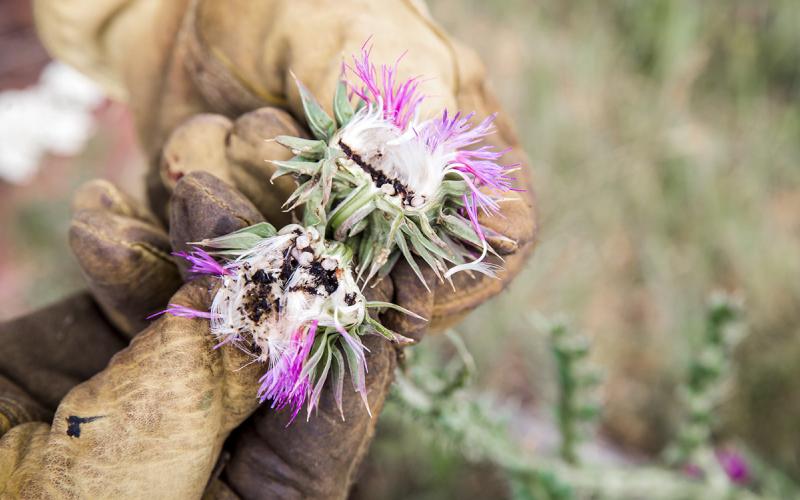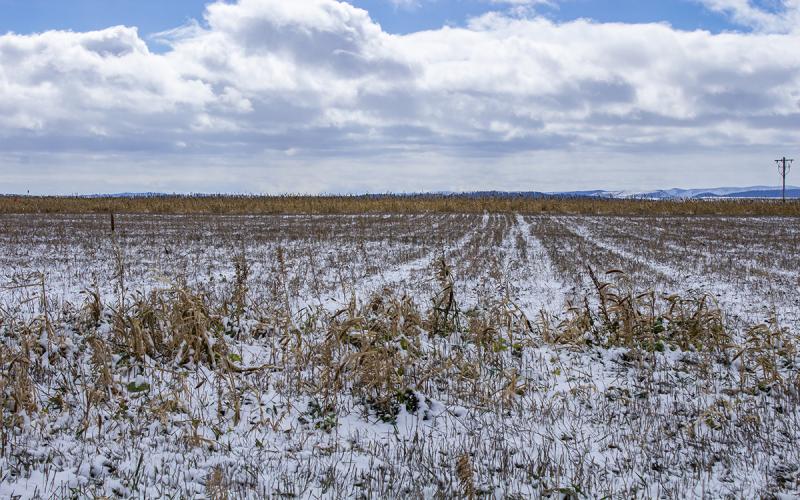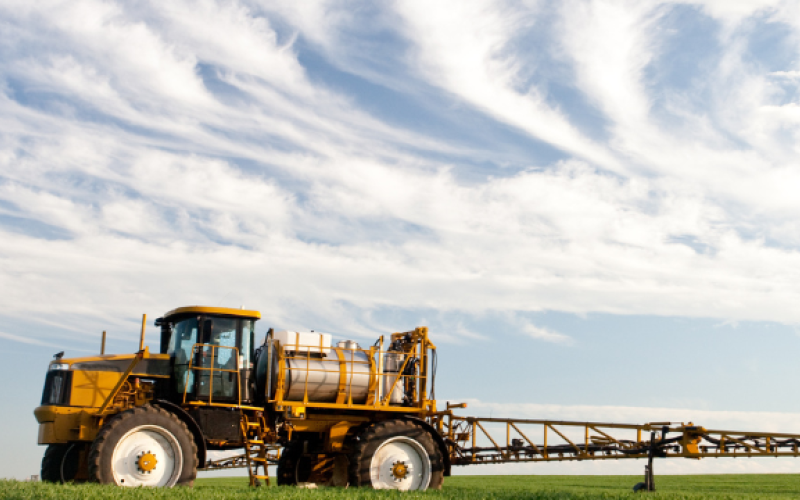Written collaboratively by Eric Jones, Philip Rozeboom, David Vos, and Jill Alms.
There are a lot of different factors that play into the effectiveness of an herbicide application. Many of these factors are within the control of the applicator. While correct herbicide mixing and sprayer calibration is important, the deposition of the spray droplets can also influence if the herbicide application will be effective or ineffective. Spray coverage is important to ensure the herbicide reaches the deposition target (in essence, the soil for preemergence herbicides or the weed leaves for postemergence herbicides). Below are the factors that influence spray coverage and how you tailor your practices to ensure proper coverage is achieved.
Herbicides
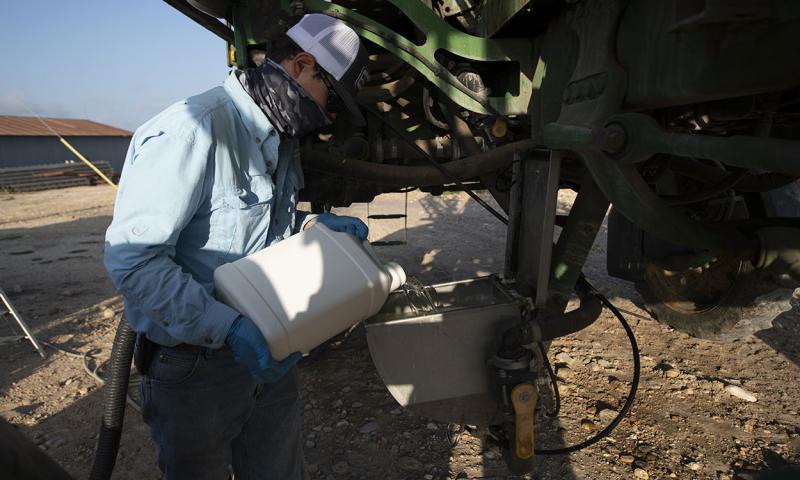
Herbicides can be broadly classified as systemic or contact. Systemic herbicides move throughout the plant, while contact herbicides cause damage to the plant only where the spray droplet lands. Therefore, every spray droplet does not have to land on every leaf of the plant for effective control for systemic herbicides. However, spray droplets need to cover the entirety of the plant to ensure effective control for contact herbicides. The requirement for spray coverage of the entire plant also demonstrates why contact herbicides need to be applied to smaller weeds (4 inches or less). That being said, spray coverage is still critical for both types of herbicides as the amount of herbicide that reaches the deposition target (soil or weed leaves) will greatly influence control; interception of too little herbicide droplets may result in poor control, while the interception of more herbicide droplets may result in effective control. Examples of systemic herbicides are glyphosate (Roundup), mesotrione (Callisto), and 2,4-D. Examples of contact herbicides are bromoxynil (Maestro), glufosinate (Liberty), lactofen (Cobra).
Nozzles
Spray nozzle type can dictate spray coverage. Smaller spray droplets can cover more surface area of the leaf, while larger spray droplets cover less surface area. Smaller spray droplets are usually recommended for contact herbicides, while larger spray droplets are recommended for systemic herbicides. However, when contact and systemic herbicides are tank mixed, the correct droplet size becomes less clear. The herbicide labels and nozzle manufacturers provide information on proper nozzle selection for specific use cases; consult these sources if unsure.
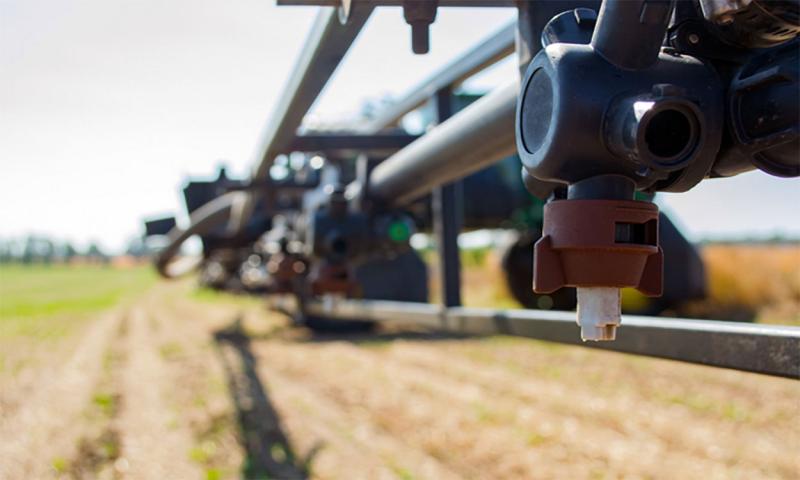
Spray droplet size can also be manipulated to combat the lateral movement incurred by wind. Bigger spray droplets are heavier than smaller spray droplets and are less subjected to lateral movement with a constant wind speed. Note: this is not a recommendation to spray large spray droplets to counter the effects of wind speeds greater than 10 miles per hour.
Spray Volume
Increasing spray volume (gallons per acre) can influence spray coverage. Research has shown that increased spray volume increases spray coverage more than nozzle type (Legleiter and Johnson 2006). This research has shown that the spray coverage is almost doubled when increasing spray volume to 15 gallons per-acre from 10 gallons per-acre. Additionally, select a nozzle and output combination that does not need to be operated at a high pressure. Spray nozzles can also have different orifice sizes that can help achieve a specific spray output (in essence, gallons per-acre). Increased spray output can also increase spray coverage. No matter what the droplet size for a nozzle, operating at high pressure will result in the production of fine, driftable spray droplets. These spray droplets will likely not reach the deposition target and could land on off target plants that results in substantial injury. Refer to the article, Pesticide Mixing and Sprayer Calibration Equations, to determine spray output.
Sprayer Speed and Boom Height
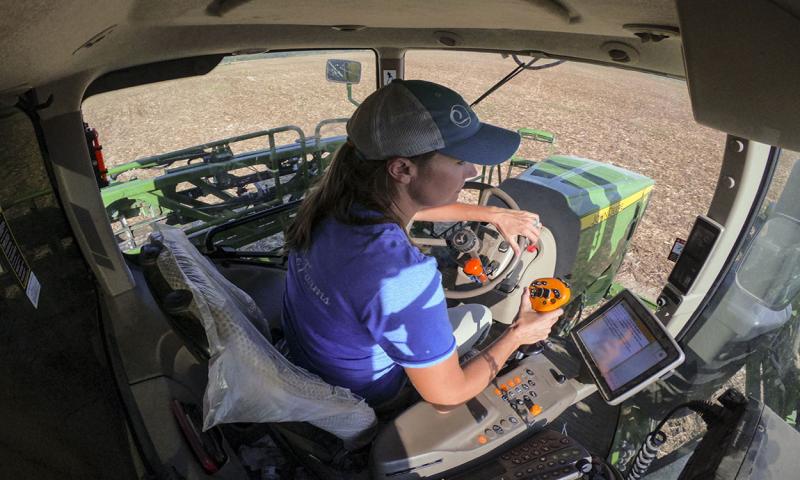
Coverage can also be influenced by the boom height and tractor speed. The higher the boom height, the more time it takes for the droplet to reach the target site. Although it may not seem like a relatively long time between when the droplet leaves the nozzle and reaches the weed; this time is enough to allow the droplet to be subjected to wind (even within labeled wind speeds) that influences where the droplet lands. Again, while the movement of the spray droplet away from the target site can result in ineffective control, the movement of the spray droplets can also result in deposition on off-target plants that results in injury.
Tractor/sprayer speed can influence spray coverage. Faster application speeds will reduce the spray coverage and potentially move spray droplets away from the deposition target. Slower tractor/sprayer speeds will help maintain effective spray coverage, which will hopefully result in effective weed management. While there is always a sense of urgency to get operations completed, if you have to respray due to inadequate spray coverage, the time and money spent is substantially increased.
Reference
Legleiter, T.R. and W.G. Johnson. 2016. Herbicide coverage in narrow row soybean as influenced by spray nozzle design and carrier volume. Crop Protec. 83:1-8.ods
